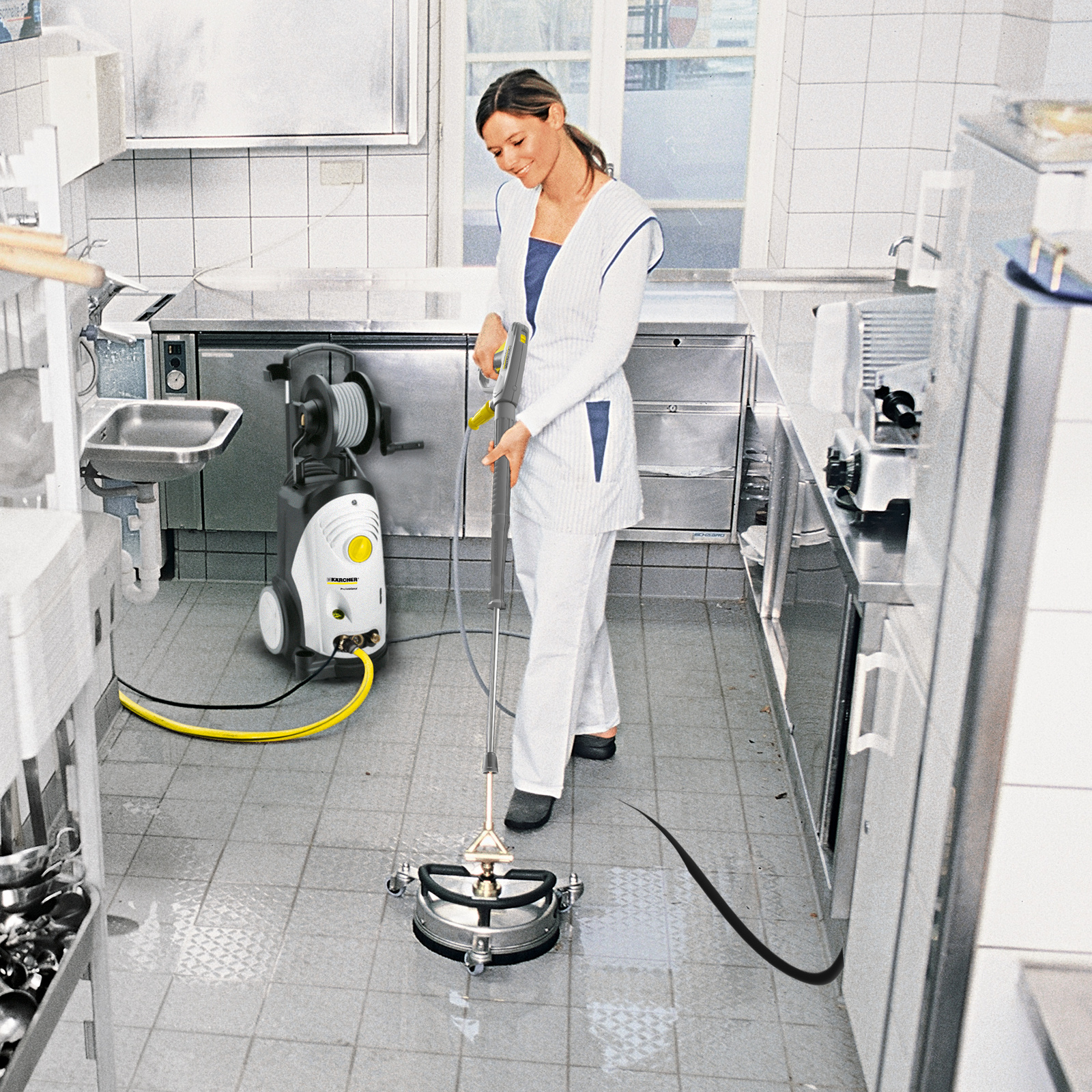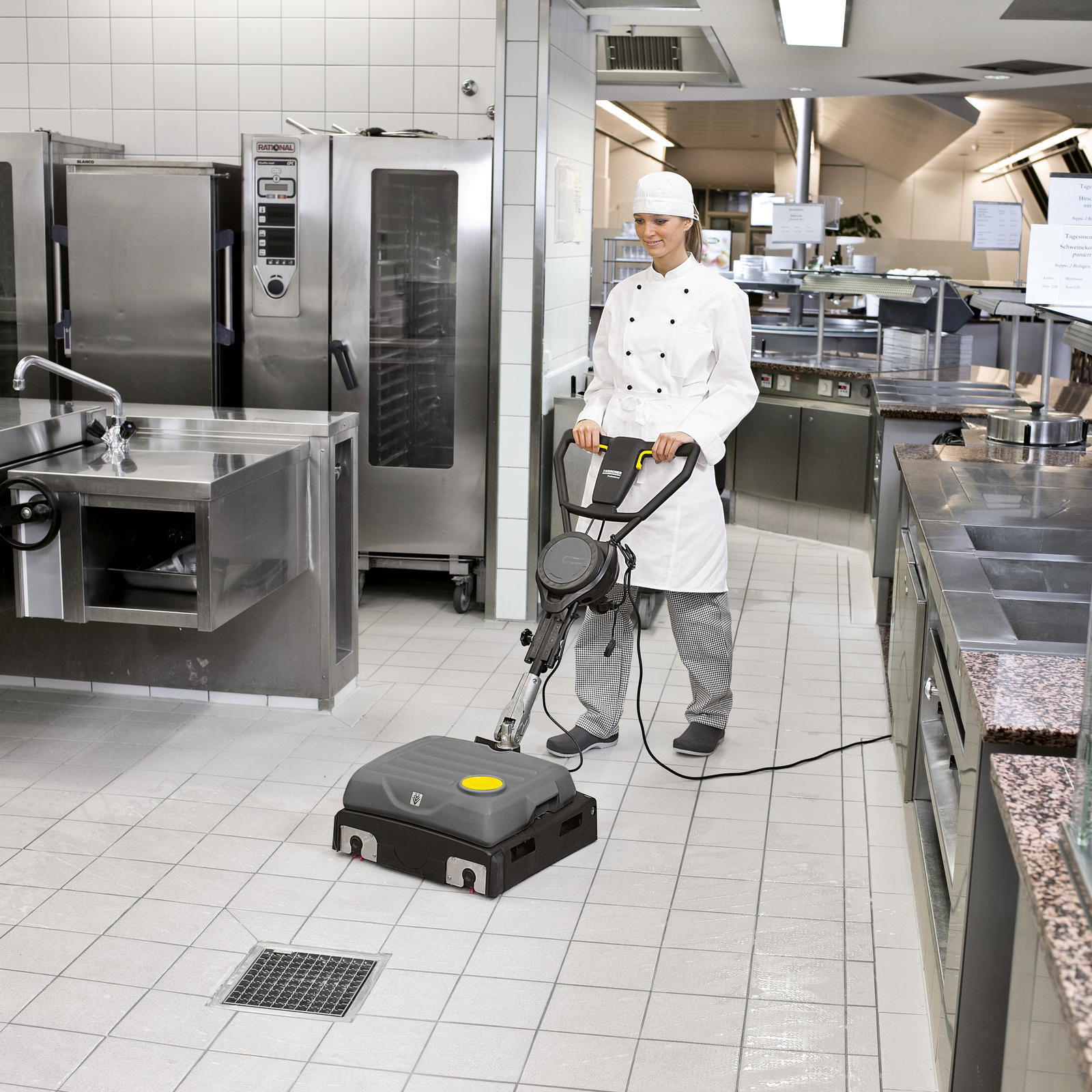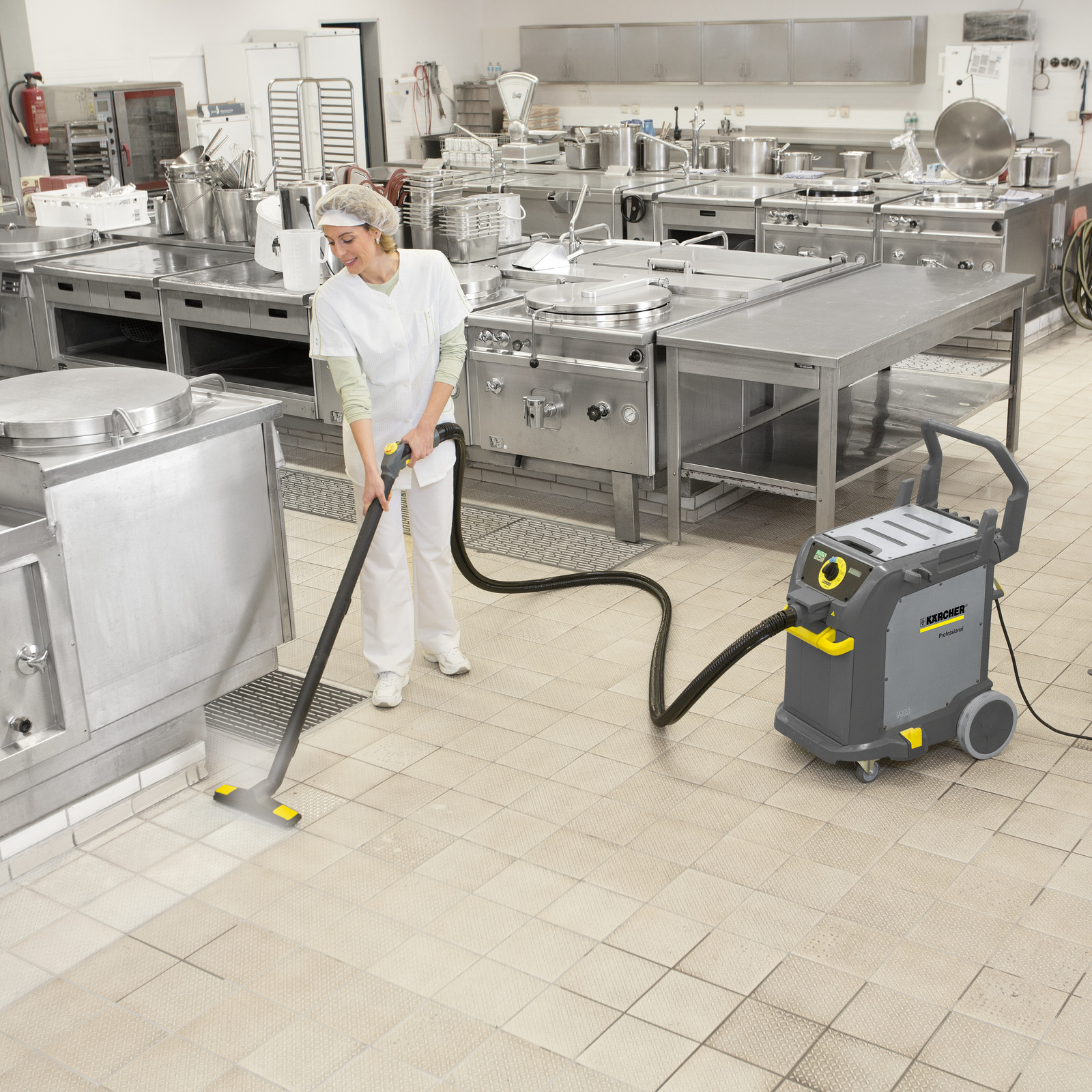Kitchen cleaning
Wherever food is cooked, there will be stubborn stains. Grease and food residues must be systematically removed in accordance with the HACCP guidelines in order to eliminate breeding grounds for microorganisms. What can high-pressure cleaners, surface cleaners, steam cleaners, scrubbers or scrubber driers do? What specifics need to be considered when using them? And what should disinfection look like? Here is an overview.
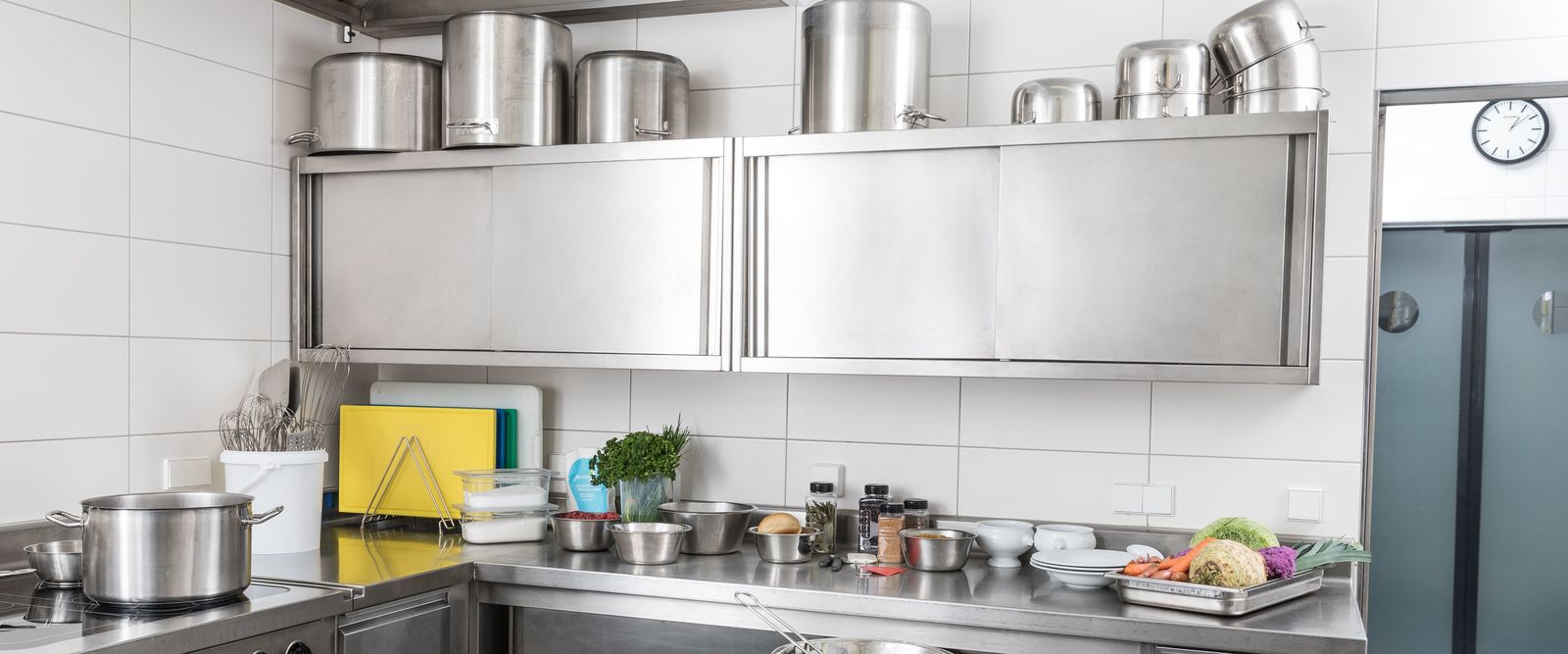
Cleaning and disinfection in accordance with HACCP guidelines*
In order to produce hygienically safe food, the kitchen and associated rooms (storage rooms, refrigeration facilities) and the machines present must be kept clean through careful cleaning and disinfection, where appropriate. As the various areas and machines have different cleaning intervals, a cleaning schedule must be created and displayed in a prominent position in each area that requires cleaning. This plan must include a detailed list of the following:
- What (machines, surfaces, floors)
- When (after use, daily, weekly)
- With what (cleaning agent and dosing)
- By whom (responsible employee) cleaning is to be carried out.
Completed tasks must be accurately logged and clearly documented by signature to allow monitoring. It must be noted that cleaning and disinfection are two separate procedures.
Cleaning aims to remove dirt and contamination, i.e. any undesirable substances including product residue, microorganisms and cleaning agent/disinfectant residues.
Disinfection comprises chemical and physical processes to eliminate microorganisms to a level that is neither hazardous to health, nor damaging to the quality of food.
*HACCP = Hazard Analysis Critical Control Point, a quality tool focused on preventive measures, designed to ensure safety in the production and handling of food and to prevent hazards that could lead to consumer illness or injury.
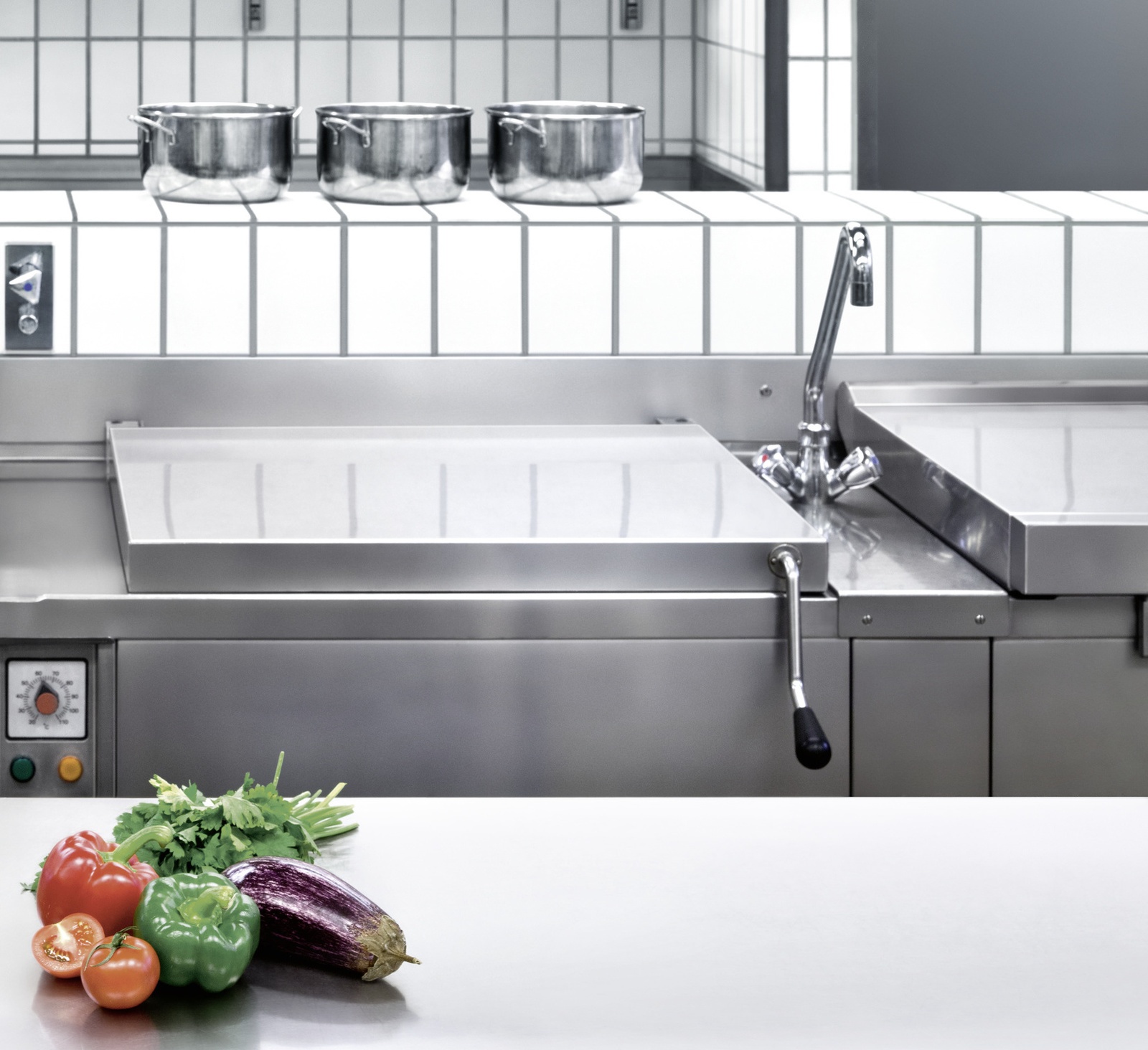
Efficient cleaning in every nook and cranny

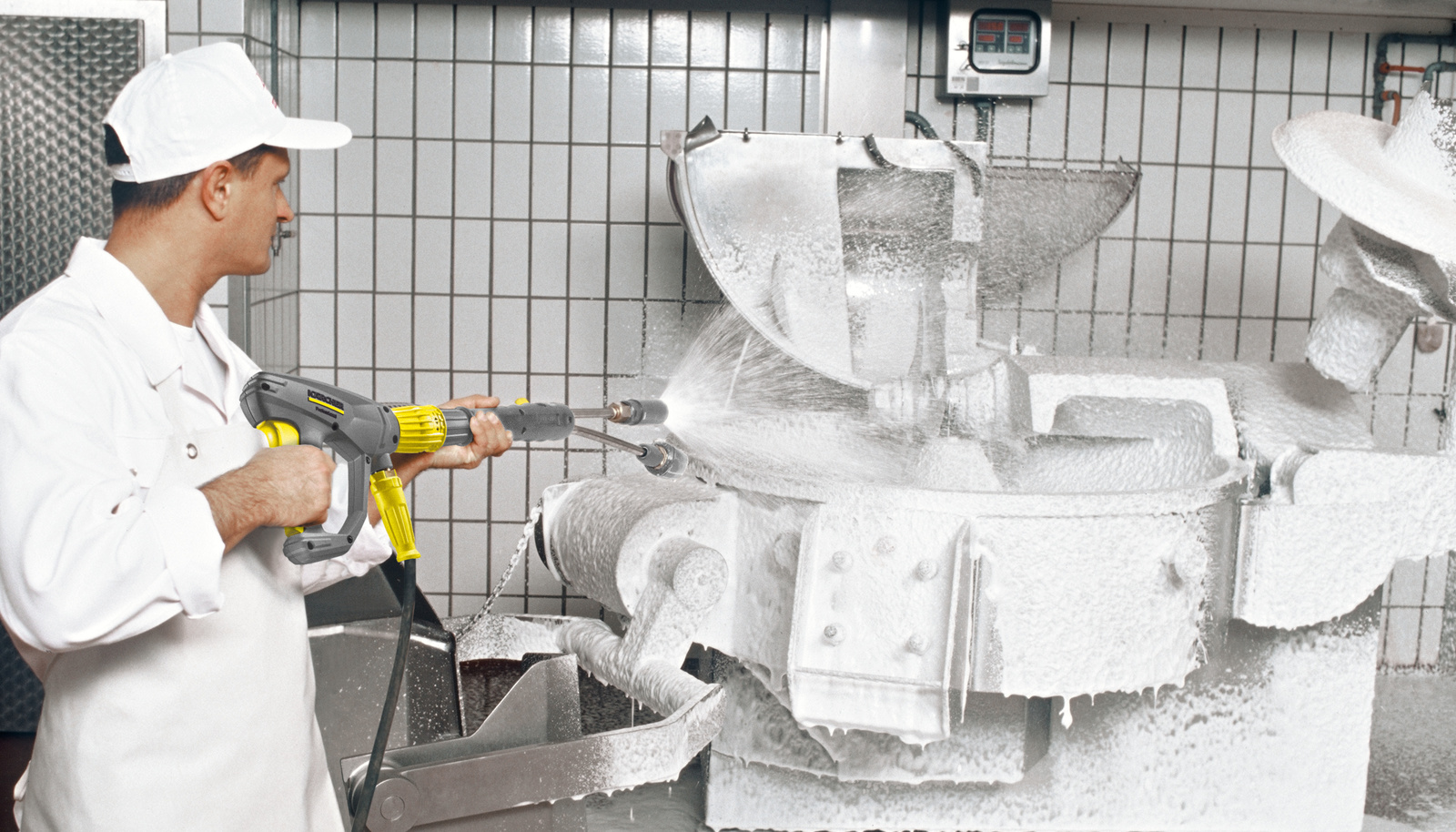
Work up a lather: Tiles and surfaces
Bright tiles and stainless steel characterise the appearance of commercial kitchens. To clean dirt off the tiles at the end of a working day, high-pressure cleaners can be used in combination with foam nozzles or cup foam lances. With the aid of the appropriate foam cleaning agents (alkaline/neutral/acidic) and air, which is added at the nozzle, high-pressure cleaners generate foam with the high-pressure jet. The foam is applied from a distance of about one to two metres, working from bottom to top, to make use of the large ejection width. The great thing about this system is that firstly, you can see where the cleaning agent has been applied and secondly, the foam stays in place for longer than a normal cleaning agent, so the contact time is increased.
However, it is important to use only as much foam as comes into direct contact with the surface you wish to clean. This allows you to work efficiently and avoids the problem of excess foam sliding down the surface due to its own weight, which would cancel out the benefit of the increased contact time. The cleaning process is subsequently carried out from top to bottom.
The only thing to note when using acidic cleaning agents is that the tile joints must first be rinsed with water. This prevents the acid from soaking in and attacking the grouting.
Gently does it: Using pressure on machines, kitchen utensils, knobs, electrics, etc.
For cleaning large kitchen utensils, high-pressure cleaners which regulate the water pressure and quantity at the high-pressure gun are often required. This makes it possible to work with the appropriate combination without the dirt being splashed back towards the user. In addition, as with all electrical fittings, work must be carried out carefully with reduced pressure in order not to damage the sensitive electrical systems. Tools that have proven successful in this respect are very short lances (250 mm) or short spray units, such as a power nozzle fitted directly onto the high-pressure gun. Depending on the size of the kitchen, it may be useful to have either a mobile high-pressure cleaner or a stationary high-pressure unit that has an outlet in various places for very large rooms.
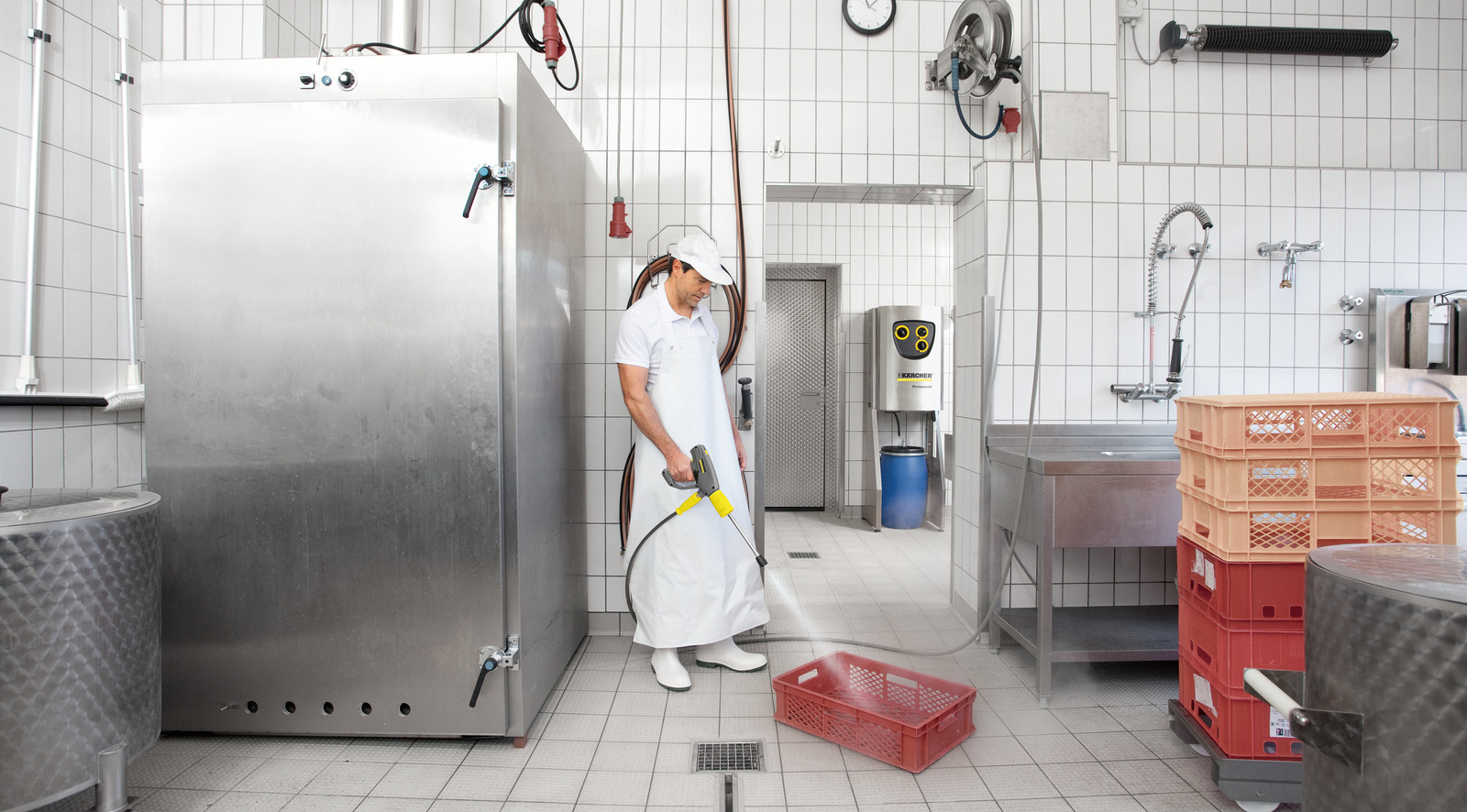
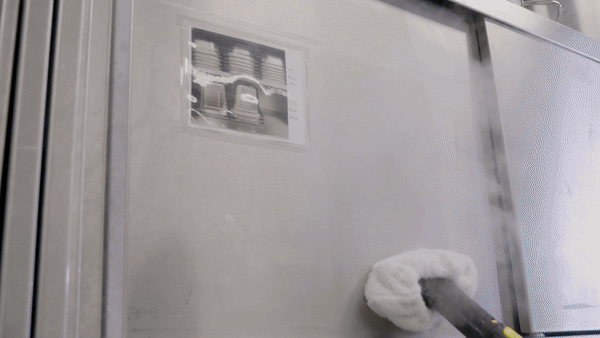
Steam: A hygienic alternative
You can also reach the required hygiene levels for machines and kitchen utensils by using steam cleaners. The steam emerges in very fine drops at a temperature of 100 °C and a pressure of 3 to 4 bar. This means that the steam gets into every crevice that a brush or cloth would struggle to reach. In this way, the edge areas of the front panels of dishwashing machines, the on/off switches of ovens or ribbed surfaces can be cleaned hygienically and thoroughly.
Tip: Freezers can be defrosted in much less time if steam is applied between the ice and the inner wall.

Surface cleaners, scrubber driers or steam cleaners: The floor
The floor of a commercial kitchen is a particular challenge. The reason behind this is that a very high anti-slip level is a requirement in order to prevent work accidents. Where normal floors offer an anti-slip value of R9, commercial kitchen floors must have a value of R11 to R13. Textured tiles also have displacement nubs so that water does not create a risk of slipping. Grease and food residue deposited throughout the working day gets caught between these nubs.
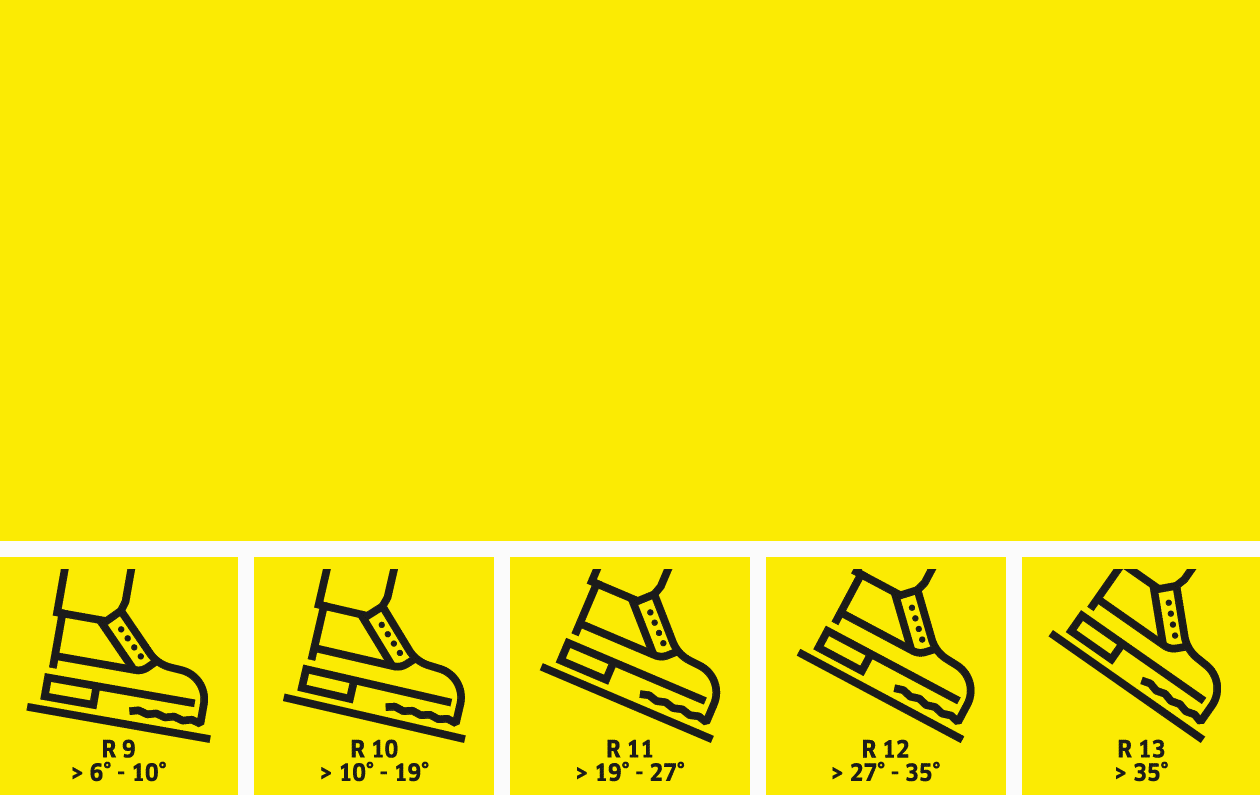
Preventing accidents: Anti-slip tiles and slip resistance values
Tiles used in work spaces, industrial areas and public spaces must meet the prescribed anti-slip rating as per evaluation groups R9 to R13 in accordance with DIN 51130. That way, accidents are avoided. In order to test the value, an assessor with protective footwear stands and walks on a sloping surface with oil. The higher the R group, the greater the angle of inclination of the area to be tested. It ranges from >6° to 10° for a low coefficient of friction (R9) up to >35° for a very high coefficient of friction (R13).
Types of dirt and the right cleaning agent in the kitchen area
In food processing, stubborn dirt often consists of a film of carbohydrates, proteins or fats.
In cleaning agents, different ingredients are involved in the cleaning performance, for example alkalis, acids, solvents, surfactants and water.
Alkaline cleaning agents
Alkaline cleaning agents are suitable for the removal of oils, greases and soiling containing protein. Alkaline solutions are often also referred to as "basic" and have a pH value of between 7 and 14.
Acidic cleaning agents
Acidic cleaning agents remove mineral soiling, such as limescale in washbasins. They sometimes have disinfectant properties. The acidic range is between 0 and 7 on the pH scale.
Surfactants
Surfactants reduce the surface tension of water, allowing water and dirt (oil and grease contamination) to mix by forming emulsions. Without this mixing, the soiling cannot be dissolved and removed. Surfactants are present in almost all cleaning agents. Soaps also fall into the category of surfactants. A neutral foam cleaner is often a good choice for cleaning in kitchens, as it is gentle on materials and removes oil, grease and protein stains thanks to the surfactants it contains.

